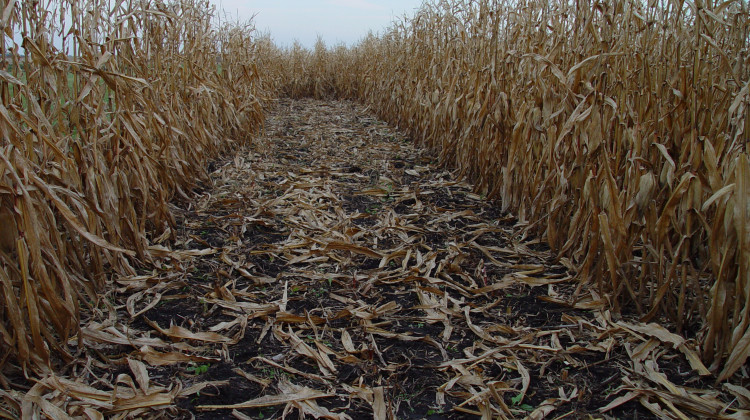
Corn stover are the stalks, leaves and husks leftover after corn is harvested. When rotting on the ground, it releases the greenhouse gas carbon dioxide — but it could be made into biofuel.
Courtesy of the Idaho National Laboratory Bioenergy Program / FlickrIn Indiana, corn is king. But ethanol isn’t as climate-friendly as biofuels made from things like grasses, wood and algae. Corn stover — the stalks, leaves and husks leftover after harvest — could present a new opportunity for farmers.
Corn requires more fossil fuels to grow — like fertilizer and tractor fuel — than other types of biomass. But it’s more economical for farmers, who can sell that corn for both ethanol and cattle feed.
Jennifer Pett-Ridge researches how to remove carbon dioxide from the atmosphere at the Lawrence Livermore National Laboratory in California. She authored Indiana's Roads to Removal report.
She said almost every agricultural crop has leftover material that could become biomass.
“About half of that gets incorporated into the soil — and we want to keep doing that — but about half of it literally kind of rots on the surface," Pett-Ridge said.
Join the conversation and sign up for the Indiana Two-Way. Text "Indiana" to 765-275-1120. Your comments and questions in response to our weekly text help us find the answers you need on climate solutions and climate change at ipbs.org/climatequestions.
Those rotting crops release carbon dioxide. Instead, this waste could be used to generate energy and make other products.
“Everything from gasification to hydrogen — which is a really growing space. You have a hydrogen hub here in Indiana but it’s very very young, it’s nascent. You can also make biochar, you can make asphalt," Pett-Ridge said.
READ MORE: Sustainable jet fuel could create opportunities for Indiana corn growers
Biochar is burnt organic material used to improve soil fertility and help the soil better capture carbon dioxide. Corn stover could also be used to make sustainable jet fuel.
Rebecca is our energy and environment reporter. Contact her at rthiele@iu.edu or follow her on Twitter at @beckythiele.
 DONATE
DONATE






 Support WFYI. We can't do it without you.
Support WFYI. We can't do it without you.